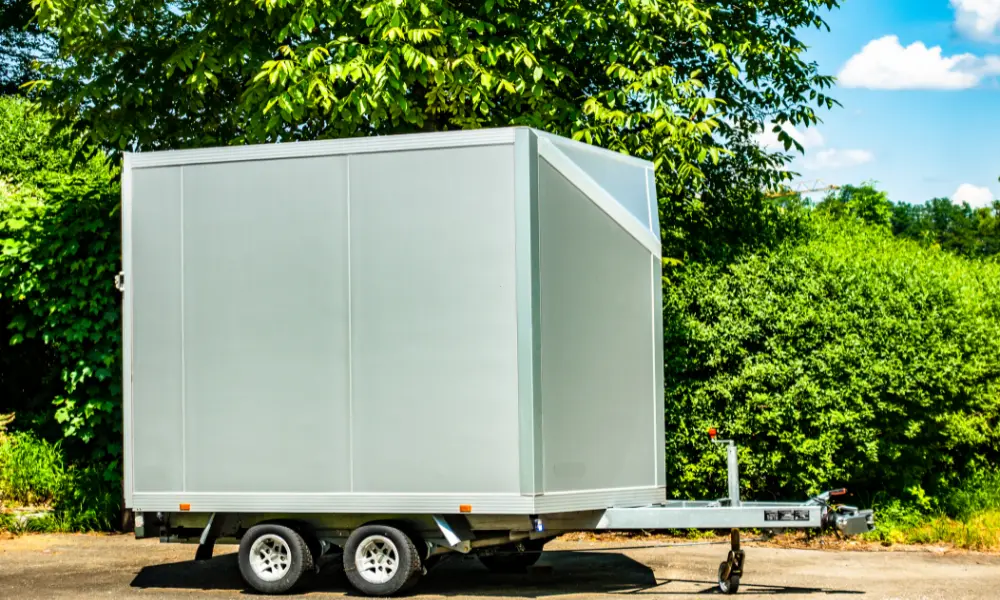Navigating Maryland’s vehicle inspection requirements can feel like deciphering a foreign language. With two separate inspection programs—safety and emissions—plus changing regulations, it’s easy to get confused about what your car needs and when. Whether you’re a new resident, buying a used car, or just trying to keep your current vehicle compliant, understanding these requirements will save you time, money, and headaches.
The Two Types of Vehicle Inspections in Maryland
Maryland operates two completely different vehicle inspection programs that serve distinct purposes:
- Safety Inspections: One-time inspections required during ownership transfers
- Emissions Testing (VEIP): Periodic testing to ensure your vehicle meets environmental standards
Let’s break down exactly what you need to know about each program.
Maryland Safety Inspection Requirements
Unlike many states that require annual safety inspections, Maryland only mandates safety inspections in specific situations. This doesn’t mean they’re less stringent—in fact, Maryland’s safety inspection is one of the most comprehensive in the country.
When You Need a Safety Inspection
You’ll need a safety inspection when:
- You’re buying or selling a used vehicle in Maryland
- You’ve moved to Maryland from another state
- You’ve inherited a vehicle or received one as a gift
- You’re registering a previously unregistered vehicle
The inspection certificate is valid for 90 days from the inspection date. If you don’t complete your registration or title transfer within that window, you’ll need a fresh inspection.
What’s Included in a Safety Inspection
Maryland’s safety inspection is thorough, covering 58 points across all major vehicle systems. Here’s what inspectors check:
| System | What They Examine |
|---|---|
| Brakes | Pad thickness (minimum 2/32″), hydraulic systems, rotors, drums, stopping ability |
| Suspension & Steering | Ball joints, wheel bearings, shocks, struts, steering components |
| Tires & Wheels | Tread depth, condition, proper size, lug nuts |
| Lights | Headlights, brake lights, turn signals, all required illumination |
| Electrical | Horn, battery condition, wiring, safety switches |
| Exhaust | Mufflers, pipes, leaks, proper mounting |
| Body & Structure | Doors, latches, mirrors, windshield, wipers, floor integrity |
| Emissions Equipment | Presence of catalytic converters and emissions systems |
The inspection includes a road test to evaluate braking, steering, and overall performance. The entire process typically takes 60-90 minutes.
Where to Get a Safety Inspection
Safety inspections must be performed at one of approximately 1,600 authorized inspection stations licensed by the Maryland State Police. These include many repair shops, dealerships, and service centers throughout the state.
Safety Inspection Costs and Re-inspection Rules
Maryland regulates the time inspectors can spend but not what they can charge per hour, so fees vary between stations. Expect to pay between $85-$125 for a safety inspection.
If your vehicle fails, you have 30 days or 1,000 miles (whichever comes first) to make repairs and return for re-inspection. During this period, only the failed items need to be re-checked—unless the inspector finds new problems.
Vehicle Emissions Inspection Program (VEIP)
Maryland’s emissions testing program focuses on reducing air pollution by ensuring vehicles meet environmental standards. Unlike the one-time safety inspection, emissions testing is required periodically for most vehicles.
Who Needs Emissions Testing
VEIP applies to vehicles registered in 14 counties plus Baltimore City:
- Anne Arundel
- Baltimore County
- Baltimore City
- Calvert
- Carroll
- Cecil
- Charles
- Frederick
- Harford
- Howard
- Montgomery
- Prince George’s
- Queen Anne’s
- Washington
When You Need Emissions Testing
Most vehicles require testing every two years. However, as of 2023, vehicles model year 2019 and newer with original ownership are exempt for the first six years (72 months) after initial Maryland registration.
You’ll receive a testing notification 8-11 weeks before your due date by email or mail.
Types of Emissions Tests
The test your vehicle receives depends on its age and weight:
- On-Board Diagnostic (OBD-II) Test: For 1996 and newer gasoline vehicles under 8,500 lbs and 2008+ heavy-duty vehicles up to 14,000 lbs
- Gas Cap Test: For 1977-1995 vehicles weighing 8,501-26,000 lbs
- Tailpipe Idle Test: For older heavy-duty vehicles
VEIP Testing Locations and Hours
You can have your emissions tested at:
- 18 full-service VEIP stations throughout Maryland
- 10 self-service kiosks (available 24/7)
VEIP Costs and Deadlines
Currently, emissions testing costs $14 at staffed stations and $10 at self-service kiosks. However, this fee will increase to $30 beginning July 1, 2025.
Late penalties start the day after your due date at $15 initially, increasing by $15 every 28 days. If your vehicle fails testing, you can get free re-testing within 30 days at the same station.
Vehicles Exempt from Inspections
Safety Inspection Exemptions
There are no exemptions for safety inspections when transferring ownership. All used vehicles being sold, inherited, or gifted must pass safety inspection regardless of age or type.
VEIP Emissions Exemptions
Several vehicle types are exempt from emissions testing:
| Exempt Vehicle Types | Special Registration Exemptions |
|---|---|
| Electric vehicles | Historic/antique vehicles (Class L) |
| All diesel vehicles | Street rod vehicles (Class N) |
| All motorcycles | Farm vehicles |
| Gasoline vehicles 1995 and older under 8,500 lbs | Emergency vehicles |
| Vehicles over 26,000 lbs | School buses and passenger buses |
Recent Changes to Maryland Inspection Requirements
Maryland has made several important changes to its inspection programs in recent years:
- Extended Exemption for New Vehicles: As of 2023, new vehicles (2019 and newer) with original ownership are exempt from emissions testing for 6 years instead of 3
- Fee Increases Coming: Emissions testing fees will double from $14 to $30 on July 1, 2025
- Enhanced Testing Standards: Starting in 2025, Maryland introduced stricter emissions requirements and reduced testing intervals for light-duty diesel vehicles
- Expanded Exemptions: Plug-in hybrid vehicles with 50+ mile electric range are now exempt from testing
Consequences of Non-Compliance
Failing to complete required inspections can lead to serious consequences:
For Safety Inspections
- Inability to transfer vehicle title
- Rejection of registration application
- Potential fines up to $500 for driving an uninspected vehicle
For Emissions Testing
- Registration holds preventing renewal
- Registration suspension when 60 days overdue
- Accumulating late fees ($15 initially, increasing by $15 every 28 days)
Tips for Hassle-Free Compliance
For New Maryland Residents
If you’re moving to Maryland, you have 60 days to register your vehicle and complete inspections. Plan ahead:
- Schedule your safety inspection first at an authorized inspection station
- Make any required repairs
- Take your inspection certificate to the MVA when registering your vehicle
- Complete emissions testing if required in your county
For Used Car Buyers
When purchasing a used vehicle in Maryland:
- Ask the seller if they have a current safety inspection certificate (must be less than 90 days old)
- If not, factor inspection costs and potential repairs into your purchase decision
- Consider having a pre-purchase inspection at a facility that can complete the official inspection
For Current Vehicle Owners
To stay compliant with emissions testing:
- Keep track of your testing due date (check online through the MVA VEIP system)
- Complete testing as soon as you receive notification
- Maintain your vehicle regularly to ensure it passes emissions tests
- Consider using self-service kiosks for faster service
Understanding the Differences Between Safety and Emissions Inspections
Many Maryland drivers confuse these two distinct programs. Here’s a quick comparison:
| Aspect | Safety Inspection | Emissions Testing (VEIP) |
|---|---|---|
| Frequency | One-time (ownership transfers) | Every 2 years |
| Coverage | All Maryland vehicles | 14 counties + Baltimore City |
| Purpose | Road safety | Environmental protection |
| Cost | $85-$125 (varies) | $14 (increasing to $30 in 2025) |
| Duration | 90-day certificate validity | Ongoing compliance |
| Exemptions | Almost none | Multiple vehicle types exempt |
Preparing Your Vehicle for Inspection
For Safety Inspections
Before taking your vehicle for safety inspection:
- Check all lights (headlights, brake lights, turn signals)
- Inspect tires for adequate tread depth
- Ensure windshield has no major cracks
- Test horn, wipers, and washer fluid
- Fix any obvious safety issues like loose mirrors or malfunctioning door handles
For Emissions Testing
To improve your chances of passing emissions testing:
- Make sure your “Check Engine” light isn’t on
- Complete any pending repairs that might affect emissions
- Drive your vehicle for at least 20 minutes before testing to ensure systems are at operating temperature
- Have your vehicle serviced regularly to maintain emissions systems
Maryland’s vehicle inspection requirements might seem complicated at first, but they’re designed with clear purposes: ensuring road safety and protecting air quality. By understanding when each type of inspection is required and what to expect, you can avoid unnecessary stress, delays, and penalties.
Remember that safety inspections are a one-time requirement when transferring vehicle ownership, while emissions testing is an ongoing biennial obligation for most vehicles in designated counties. Both systems help maintain Maryland’s commitment to safe roads and clean air.















